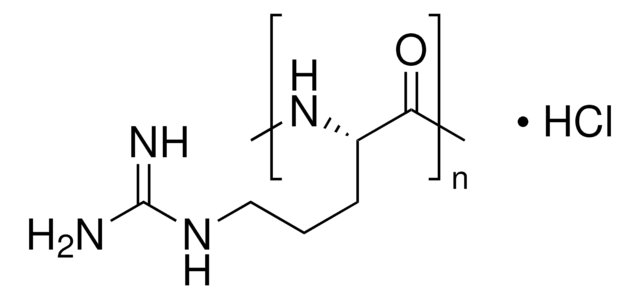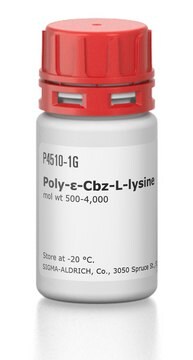P2658
Poly-L-lysine hydrochloride
suitable for cell culture, Mol wt 15,000-30,000
Synonym(s):
L-Lysine hydrochloride homopolymer
About This Item
Recommended Products
Product Name
Poly-L-lysine hydrochloride, mol wt 15,000-30,000
form
powder or solid
mol wt
15,000-30,000
technique(s)
cell culture | mammalian: suitable
color
white to light yellow
application(s)
cell analysis
storage temp.
−20°C
Looking for similar products? Visit Product Comparison Guide
Application
Biochem/physiol Actions
Analysis Note
Other Notes
Storage Class Code
11 - Combustible Solids
WGK
WGK 3
Flash Point(F)
Not applicable
Flash Point(C)
Not applicable
Personal Protective Equipment
Regulatory Listings
Regulatory Listings are mainly provided for chemical products. Only limited information can be provided here for non-chemical products. No entry means none of the components are listed. It is the user’s obligation to ensure the safe and legal use of the product.
JAN Code
P2658-25G:
P2658-100MG:
P2658-500MG:
P2658-VAR:
P2658-BULK:
P2658-1G:
P2658-25MG:
Choose from one of the most recent versions:
Already Own This Product?
Find documentation for the products that you have recently purchased in the Document Library.
Customers Also Viewed
Articles
Layer-by-Layer (LbL) Assembly, A "Gentle Yet Flexible" Method Toward Functional Biomaterials
Humankind has utilized protein materials throughout its existence, starting with the use of materials such as wool and silk for warmth and protection from the elements and continuing with the use of recombinant DNA techniques to synthesize proteins with unique and useful properties.
Our team of scientists has experience in all areas of research including Life Science, Material Science, Chemical Synthesis, Chromatography, Analytical and many others.
Contact Technical Service







